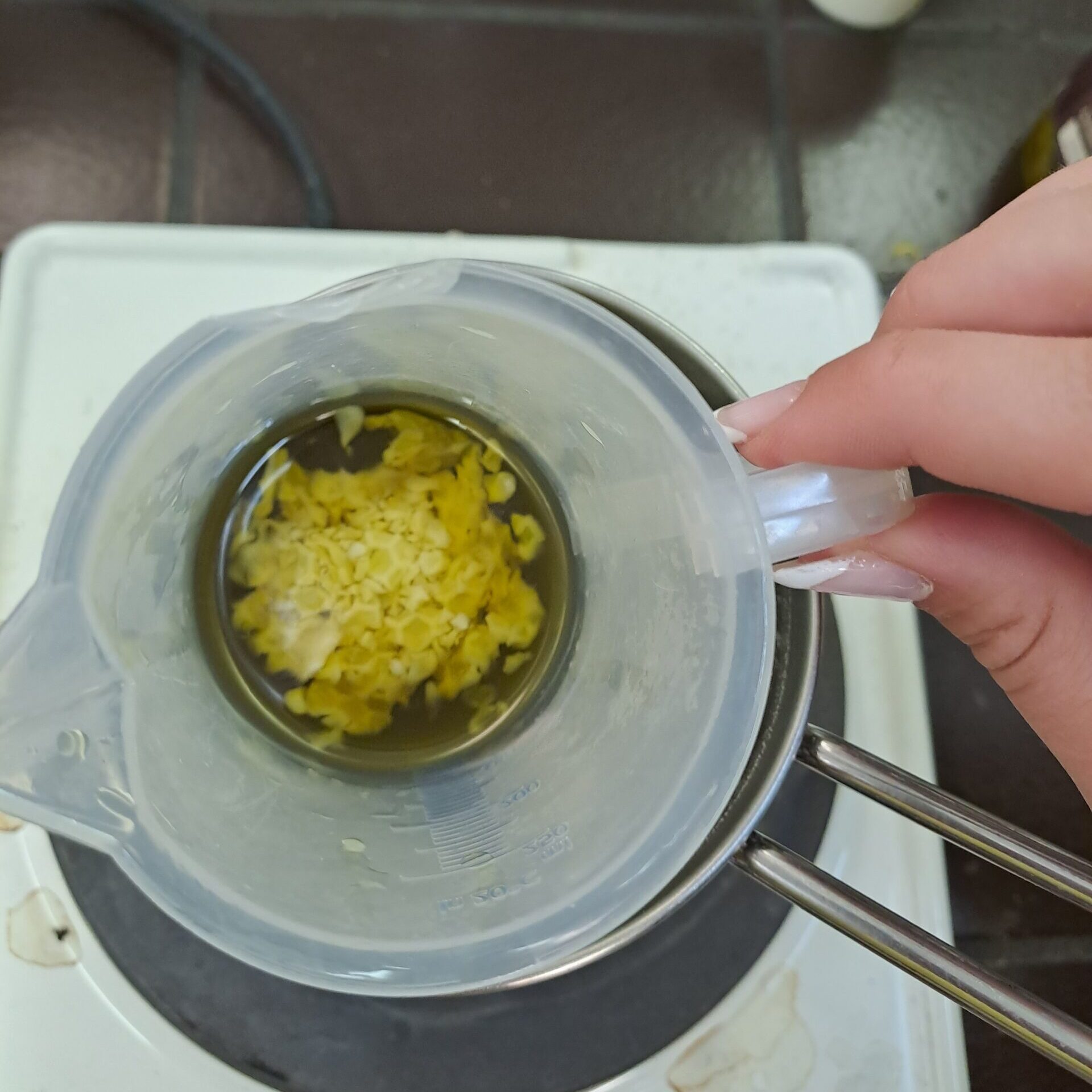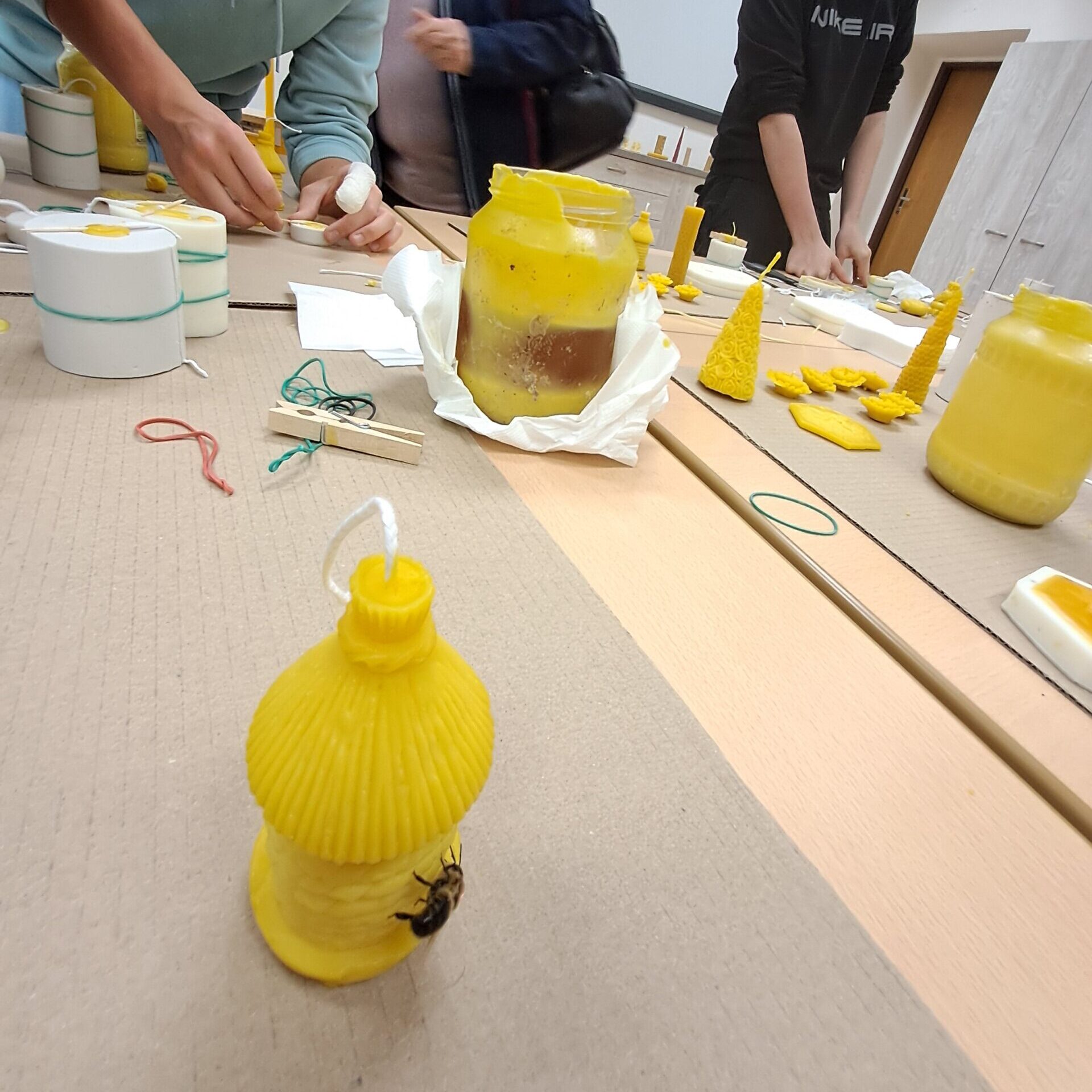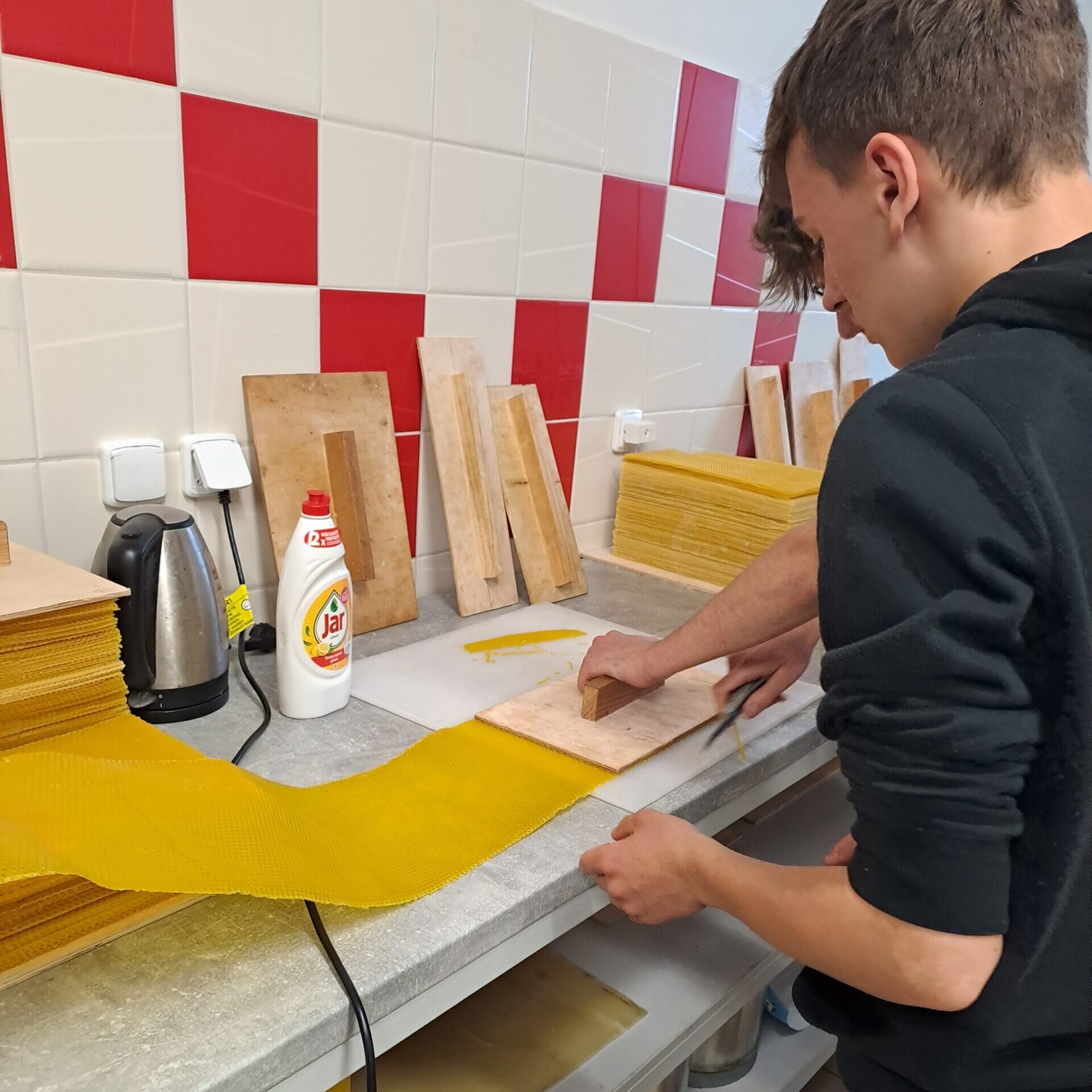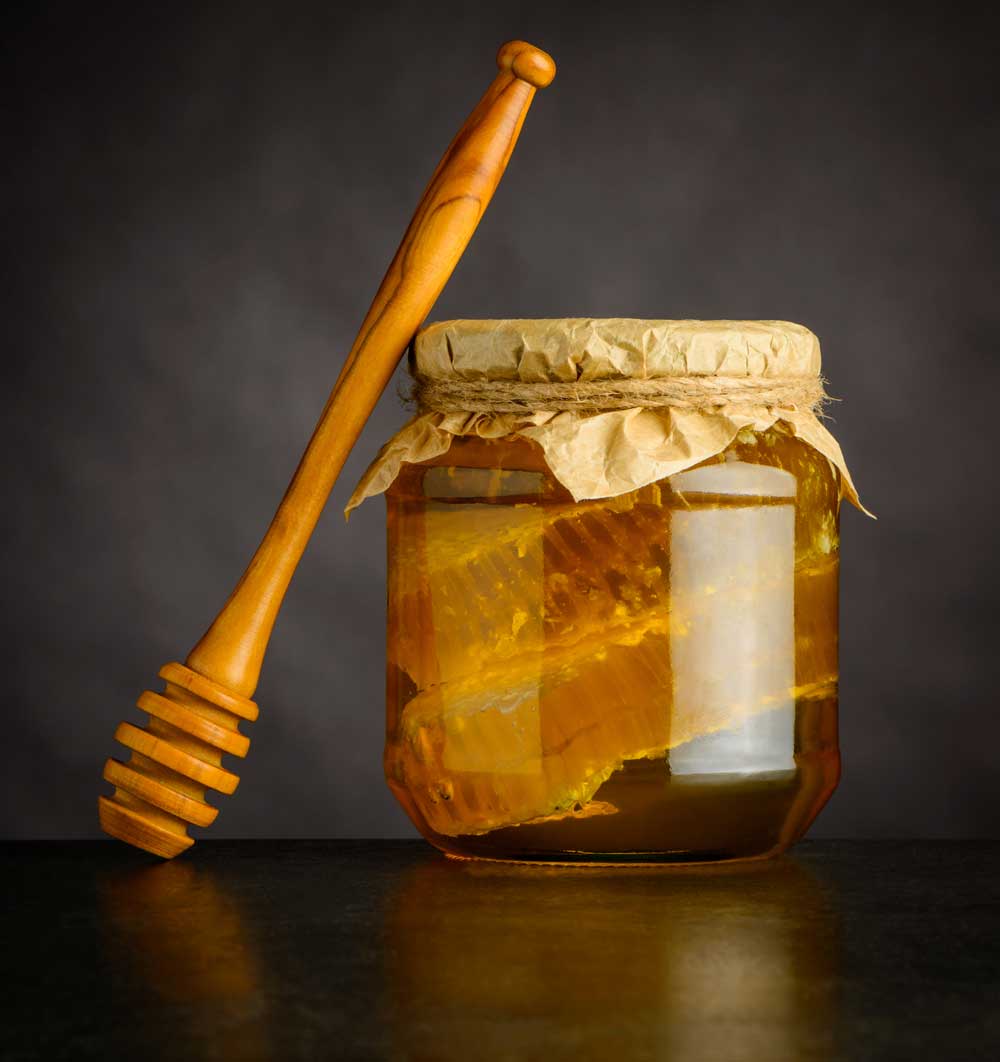
Beeswax
Beeswax is an animal wax produced by honeybees of the Apis mellifera species in wax glands.
What is Beeswax?
White to yellow-brown color, partly dependent on the amount of pigments absorbed from pollen.
Plastics and pliable at 32-35°C, becoming very hard at slightly lower temperatures (25-30°C).
Composition of Beeswax:
- More than 300 components identified.
- Mainly consists of esters of saturated fatty acids with monovalent aliphatic alcohols (70-74%).
- 13-15% free fatty acids, 12-15% aliphatic hydrocarbons, as well as colorants, aromatic substances, some minerals, and a significant amount of vitamin A.
Formation and Significance of Beeswax:
- Produced by wax glands located on the front side of the abdominal segments of the bee.
- Beeswax is created when honey undergoes metabolism in cells associated with wax glands, transforming into bee wax.
- Bees must consume pollen in the first days of their lives to develop fatty cells.
- Beeswax is also produced using honey stored in the hive as a raw material. To produce 1kg of beeswax, a bee needs to consume 8.4 kg of honey.
- This beeswax is used to construct honeycomb cells where the queen lays eggs, and worker bees store honey and pollen. Additionally, beeswax is used for making wax covers for honey-filled cells.



WAX USAGE
Chewing:
Mixed with honey, it is used for inflammations of the oral cavity, esophagus, and stomach, cleaning the nasal part of the throat, sinusitis, gum issues, asthma, hay fever, and seasonal allergies.
*In Cosmetics:*
Beeswax provides skin with softness, elasticity, moisture, and protection against ailments. Used in creams, ointments, lotions, soaps, depilatory creams, cosmetics, and hair strengtheners. Essential wax extract is a valuable substance in the perfume industry, comparable in quality to rose and jasmine oil. It takes one ton of wax to obtain 1kg of fragrance, and the extracted wax is still useful for making honeycombs.
*In Pharmacy:*
Used as an ingredient in various ointments, plasters, and pharmaceutical preparations.
*In Medicine:*
Utilized for making molds and impressions.
It’s also used in candle making, sealing, artistic techniques such as batik, furniture polishes, gardening pastes, the food industry, textile dyeing, and metal corrosion protection.
PROVIDERS

ČEBELARSTVO PISLAK BALI
Apače 303, 2324 Lovrenc na Dr. polju
Slovenija, EU

ČEBELARSKI CENTER MARIBOR
TRGOVINA JANA
Jana Pušnik Pokrivač s.p.
Tavčarjeva 11, 2000 Maribor
ČEBELARSKI CENTER MARIBOR
Streliška 150, 2000 Maribor

ŠEMEN ŠTEFAN
Šemen Štefan s.p., prodaja medu
Lipa 145 A
9231 Beltinci